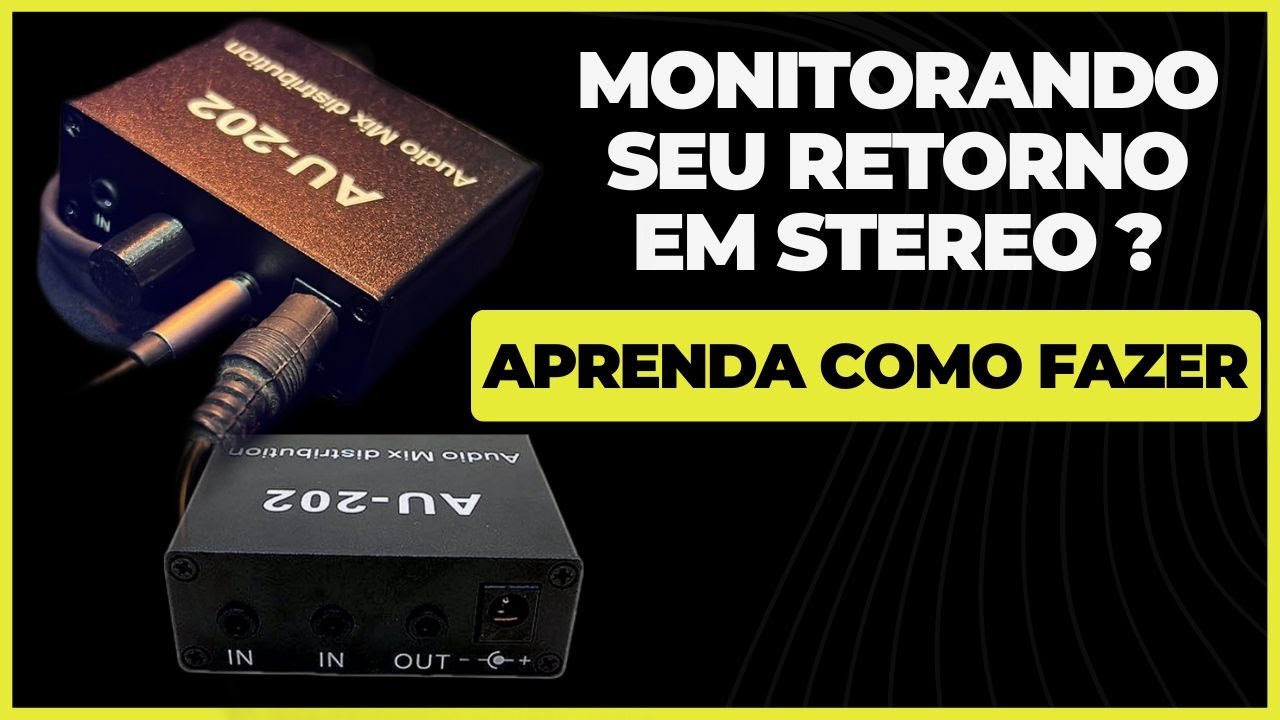Understanding Sound Reinforcement - Power Amplifiers (Part 2)
Summary
TLDRThis script discusses the operation of two-channel amplifiers, focusing on input and output configurations, including stereo, parallel mono, and bridged mono modes. It emphasizes the importance of correct setup to prevent distortion and damage to speakers. The video also highlights the need for proper ventilation and power conditioning to ensure amplifier longevity. Additionally, it advises on selecting an amplifier with adequate power to protect loudspeakers and mentions advanced features like DSP, network control, and monitoring for enhanced audio system management.
Takeaways
- 🔌 There are two basic input configurations for a two-channel amplifier: stereo and parallel mono.
- 🎧 In parallel mono mode, each amplifier channel receives a different input signal, which simplifies wiring by eliminating the need for Y cords and adapters.
- 🔊 Two basic output configurations exist for a two-channel amplifier: stereo and bridged mono, with the latter combining channels for higher power output.
- ⚙️ Correct configuration selection (stereo, parallel, or bridged mono) is critical before energizing the amplifier.
- 🔍 Before use, loudspeaker cables should be tested for shorts using a speaker tester or volt-ohm meter.
- 🎵 Adjusting amplifier control knobs while playing music from a source ensures optimal volume without distortion.
- 🚫 Clipping and distortion are caused by pushing the amplifier beyond its rated output, overpowering loudspeakers, or sending distorted signals.
- 🌡️ Power amplifiers generate significant heat, necessitating proper ventilation to prevent overheating and extend lifespan.
- ⚡ High power amplifiers require dedicated AC power circuits, while medium power amplifiers can share circuits.
- 🔌 Power conditioners are recommended to maintain constant voltage levels and prevent audio system interference.
- 📊 Selecting an amplifier involves matching its power output to the loudspeaker's power handling, with a higher wattage amplifier providing headroom to prevent damage.
Q & A
What are the two basic input configurations for a two-channel amplifier?
-The two basic input configurations for a two-channel amplifier are stereo and parallel mono. In stereo mode, each channel receives a different input signal, while in parallel mono mode, each amplifier channel receives the signal connected to input one.
What is the advantage of using parallel mono mode in an amplifier?
-Parallel mono mode eliminates the need for Y cords and adapters when a common signal is required to feed both amplifier channels.
What are the two basic output configurations for a two-channel amplifier?
-The two basic output configurations for a two-channel amplifier are stereo and bridged mono. In stereo mode, the amplifier has two output channels working independently, while in bridge mono mode, the two channels combine into one high power output in a push-pull configuration.
Why is it important to set the correct configuration mode before energizing an amplifier?
-Proper settings are critical to the amplifier's operation. Selecting the correct configuration mode (stereo, parallel, or bridged mono) before energizing the amplifier ensures that the amplifier operates as intended and prevents potential damage or malfunction.
How can one check for shorts in loudspeaker cables?
-One can check for shorts in loudspeaker cables using a speaker tester or a basic volt-ohm meter.
What is the recommended way to set amplifier control knobs for optimal performance?
-An easy way to set the amplifier control knobs is to play a CD or music source through the mixer, set the faders and controls to nominal or unity gain, and then turn the amplifier controls up until the desired system volume is met without causing distortion or clipping.
What are the three main causes of clipping and distortion in an amplifier system?
-The three main causes of clipping and distortion are pushing an amplifier beyond its rated output, overpowering the loudspeakers, or sending a distorted signal to the amplifier.
How does overheating affect the lifespan of an amplifier?
-Overheating greatly decreases the lifespan of an amplifier. Proper ventilation around the amplifier and conditioning of the room where the amplifiers are located is critical to prevent overheating.
Why is a clean AC power source important for an amplifier?
-A clean AC power source is important for an amplifier because it is dependent on the AC power source to produce the power it was designed to deliver. An unclean AC source or improper grounding can introduce buzz and hum into the audio system.
What is the significance of headroom when selecting an amplifier for a loudspeaker?
-Headroom is significant when selecting an amplifier for a loudspeaker because it provides extra power above the loudspeaker's rated power. This helps prevent the amplifier from clipping and damaging the loudspeaker drivers, ensuring a cleaner and safer operation.
What additional features do some amplifiers include to assist sound engineers?
-Some amplifiers include additional features such as DSP input modules, network control and monitoring, output sequencing, and hibernation modes. These features provide extra control and the ability to monitor the amplifier's performance visually through a computer in the sound booth.
Outlines

Этот раздел доступен только подписчикам платных тарифов. Пожалуйста, перейдите на платный тариф для доступа.
Перейти на платный тарифMindmap

Этот раздел доступен только подписчикам платных тарифов. Пожалуйста, перейдите на платный тариф для доступа.
Перейти на платный тарифKeywords

Этот раздел доступен только подписчикам платных тарифов. Пожалуйста, перейдите на платный тариф для доступа.
Перейти на платный тарифHighlights

Этот раздел доступен только подписчикам платных тарифов. Пожалуйста, перейдите на платный тариф для доступа.
Перейти на платный тарифTranscripts

Этот раздел доступен только подписчикам платных тарифов. Пожалуйста, перейдите на платный тариф для доступа.
Перейти на платный тарифПосмотреть больше похожих видео
5.0 / 5 (0 votes)






